I decided to take 10 of the all-time great guitar riffs 🎸 and play them on harmonica. Check it out:
The Riffs
✅ SUITABLE FOR BEGINNERS
#10(I Can’t Get No) Satisfaction
by the Rolling Stones
There’s a funny story behind this 1965 hit song. The Rolling Stones’ guitar player, Keith Richards had played this riff through his newly acquired (and recently invented) guitar effects pedal called a “Fuzz Pedal” on the demo recording as a placeholder for what he’d imagined would be replaced by a horn section.
The producer advocated for leaving the demo guitar part in, but couldn’t persuade Keith Richards to agree.
While the band was touring, without the band’s knowledge or consent, the producer released the song with the fuzz guitar part in it, and the rest, as they say, is history.😂
The riff is in B minor and works REALLY WELL in 3rd position on an A harmonica because, not only can you play the riff without any bends, but also – the chords in the verse are E and A – which we can get by just drawing and blowing anywhere between holes 1 and 4.
To play this riff you need to know how to isolate notes, which I cover in my Single Notes lesson.
This is the basic riff:
-4 -4 -4 5 -5 -5 -5 5
Keith Richards makes subtle changes in the rhythm of how he’s playing it throughout the song, but you could play that 👆 verbatim every time, and it would sound great.
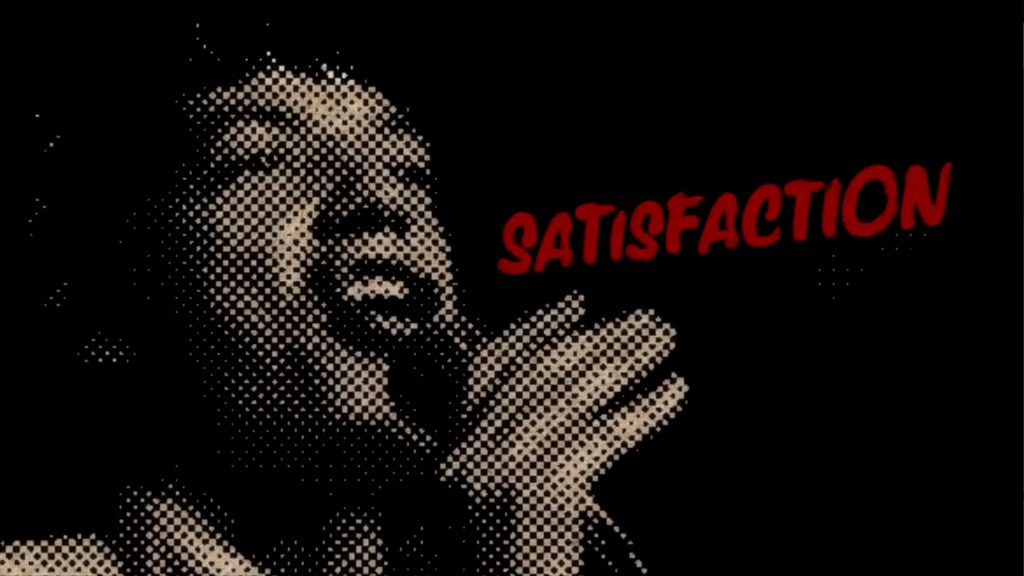
And here are the harmonica tabs for Satisfaction on an A harmonica in 3rd position, key of Bm, exactly as I play it in the video.
-4 -4 -4 5 -5 -5 -5 5
-4 -4 -4 5 -5 -5 5 5 -4
-4 -4 -4 5 -5 -5 -5 5
-4 -4 -4 5 -5 -5 -5 5 5 -4
-14 -14
Notice I ended with the octaves playing a Split-4, which means I’m blocking holes 2 and 3 with my tongue, and playing holes 1 and 4 at the same time which give a great big powerful horn-like vibe.
If you can play octaves, you can add power by starting the first riff with them as well:
-14 -14 -4 5 -5 -5 -5 5
Isn’t that just so satisfying?😉
#9Wild Thing
by the Troggs
This 1966 hit from the Troggs has been covered by a myriad of artists, including most famously, Jimi Hendrix’ rendition.
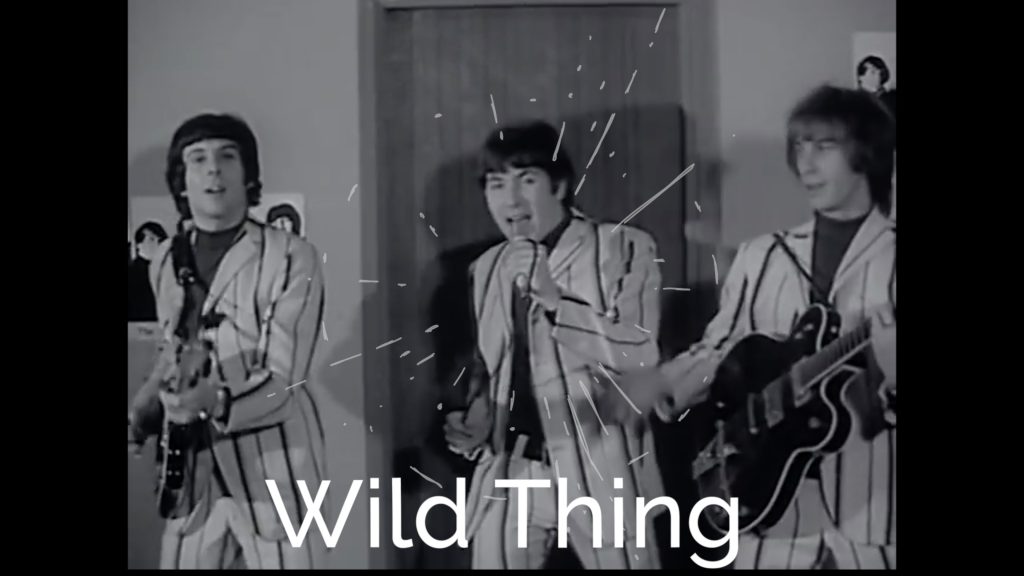
It’s played on the guitar in the key of A, using moveable shaped chords called Bar Chords (the 1st finger bars across the neck on one fret, and the other fingers form a chord above it).
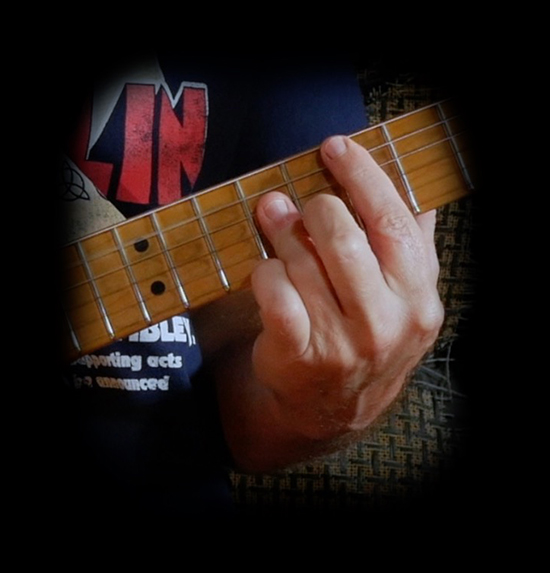
Wild Thing consists of only 3 chords (the I chord, IV chord, and V chord) but played in a rhythmically exciting way. It’s one of the first rockin riffs I learned on the guitar when I was just a wee lad.
And it’s really quite easy on the harmonica as well, played on a D harmonica in 2nd position, key of A.
If you’ve taken my Beginner to Boss course or checked out my free lesson on Harmonica Chords, then you already understand chord numbering, and you know that in 2nd position we can play:
- The I Chord (the first chord in this riff) and
- The IV Chord (the second chord in this riff)
- BUT we DON’T have a way to play the V Chord (the third chord in this riff)
So we just have to choose to play the -1 OR the -4 when we get to the V chord. For intermediate and advanced players, we can play BOTH the -1 and -4 at the same time using the same Split-4 Octaves technique I used at the end of our #10 riff, Satisfaction.
The basic riff is great practice for beginners to work with the syllables “Ta” and “Ka” and it goes like this:
Draw Draw TaKa Ta Ta Draw
-1234 -1234 2345 2345 2345 -1234
Draw Draw TaKa Ta Ta Ta
-14 -14 2345 2345 2345 2345
That is the main riff ☝️ that gets repeated throughout the song. And notice the differences between the 1st line and the 2nd line:
- Line 1, the challenge is to get quickly from the last “Ta” back to an inhale
- Line 2, remember you can choose JUST the -1 OR the -4 where I’m playing both
- Line 2, we have one more “Ta” exhale than in line 1
I hope you have fun with that! And here are the harmonica tabs for Wild Thing, exactly as I play it on the video:
Draw Draw TaKa Ta Ta Draw
-1234 -1234 2345 2345 2345 -1234
Draw Draw TaKa Ta Ta Ta
-14 -14 2345 2345 2345 2345
Draw Draw TaKa Ta Ta Draw
-1234 -1234 2345 2345 2345 2345 -1234
-14 -14 -14 -14 -2″ -12 -2″ -123
#8Brown-Eyed Girl
by Van Morrison
It’s hard not to crack a smile when you hear the upbeat intro guitar riff to Van Morrison’s 1967 hit Brown-Eyed Girl.
Here are the harmonica tabs for Brown-Eyed Girl exactly as a I play it on the video:
This harmonica riff is really easy to play. The only challenge is switching back and forth between 2 harmonicas!
G Harmonica 45 -45 56 -45 45
C Harmonica 45 -45 56 -45 45
G Harmonica 45 -45 56 -45 45 -23 -23 34 -24
G Harmonica 45 -45 56 -45 45
C Harmonica 45 -45 56 -45 45
G Harmonica 45 -45 56 -45 45 -23 -23 34 -24
I’m using another tongue-blocking trick on the last note of the riff -24. This time it’s a Split-3 so I’m playing -2 and -4 at the same time, and blocking -3 with my tongue. I chose to do this in order to mimic the guitar riff as closely as possible, but here are 2 other options for the last 4 notes of the riff:
OPTION 1
-23 -23 34 -34
OPTION 2
-23 -3 4 -4
Any of these approaches will sound great! One of the great things about the harmonica is that it’s harmonized, so it’s hard to play wrong notes. 😃
And that’s the end of our “suitable for beginners” riffs, from here on out it’s “proceed with caution!”
⚠️ INTERMEDIATE & ADVANCED
#7Boom Boom
by John Lee Hooker
John Lee Hooker’s 1962 “Boom Boom” intro is an iconic riff, played in open position on the guitar, key of E. We can best approximate it on harmonica playing an A harmonica in 2nd position.
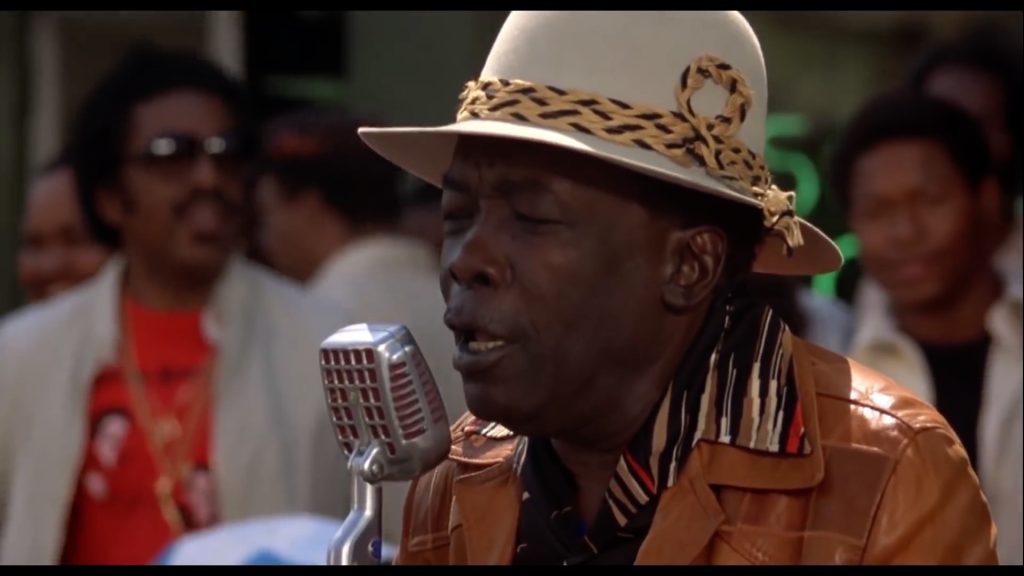
This is a great song for intermediate and advanced players to work on because it can help us break out of the rut of always playing -4’ -4 -5 (which I’m guilty of!) In this riff we jump from the -4 up to the 6 very quickly.
I use tongue blocking to make this fast leap up the 6 and back to -4.
Notice I’m using Octaves again in lines 2 and 4 to try and imitate the beef of the chords and double-stops in the original guitar part. Here are the harmonica tabs for Boom Boom:
-4’ -4 6 -4’ 4 -3’ -2 -2” -2
-12 -3’ 14 -3’ -12
-2 -3’ 4 -3’ -2 -2” -2
-12 -3’ 14 -3’ -12
(Repeat)
#6Hoochie Coochie Man
by Muddy Waters
A killer blues guitar riff in the key of A, it was originally recorded in 1954, making it the oldest riff in our countdown, and it STILL sounds BADASS seven decades later!! 🤯
This is one of the 2 songs in our countdown that actually has harmonica on the original recording.
If we wanted to truly mimic the guitar riff, I would approach it on a D harmonica in 2nd position, key of A like this:
🎸 Guitar Riff: -3’ 4 -4 -3’ 36
The harmonica riff on this song, as I mentioned in the Top 4 Muddy Water Blues Harmonica Riffs, it’s been played in 2 positions over the years. The original 1954 recording is played by Little Walter in 1st position in the key of A like this:
-2” -2 -3’ -2 -3’ 14
Later on, many players also played it in 2nd position on a D harmonica, key of A, as I do in the video, and here are the harmonica tabs for Hoochie Coochie Man in 2nd position:
-1’ -1 -2” -1 “-2 -12
#5Smoke on the Water
by Deep Purple
Deep Purple’s 1972 guitar riff in Smoke on the Water is surely one of the rockingest riffs of the 20th century. I teach how to play it in 3rd position in my Beginner to Boss course where we do it (like everything in the course) on a C harmonica, in the key of D.
The original recording is in the key of G, so to play it in 3rd position, you’d wanna have a Low F harmonica, and you could play the riff like this:
-4 -5 6 -4 -5 -6’ 6 -4 -5 6 -5 -4
If you wanted to LEVEL UP that riff and give it even more attitude you could add in octaves:
-14 -5 36 -14 -5 -6’ 36 -14 -5 36 -5 -14
But I was experimenting with playing the vocal melody in the chorus of the song and noticed I couldn’t do it (without overblows) in the center octave in 3rd position, so I decided to try it out on my Lee Oskar Natural Minor key of Gm harmonica.
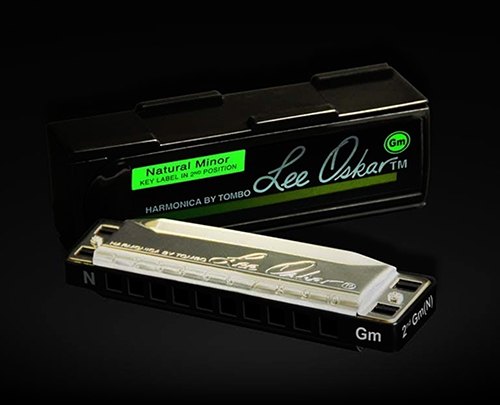
I found that I CAN play the vocal melody in the chorus on the Natural Minor. But I think the riff sounds more badass too because we can play the -12 which sounds so much fatter than just playing a -2.
Here are the harmonica tabs to Smoke on the Water by Deep purple on Natural Minor Gm harmonica:
Guitar Riff:
-12 -3 14 -12 -3 -4’ 14 -12 -3 14 -3 -2
Chorus Melody:
-5′ -4 4 5 4
-2 -3 -2 -3 -2 -2″ -2
-5′ -4 4 5 4 (Back to guitar riff)
#4Roadhouse Blues
by the Doors
The Doors’ rocking shuffle from 1972 is another song with harmonica in the original recording, and it’s another song I teach in my Beginner to Boss course on a C harmonica, in 2nd position, key of G.
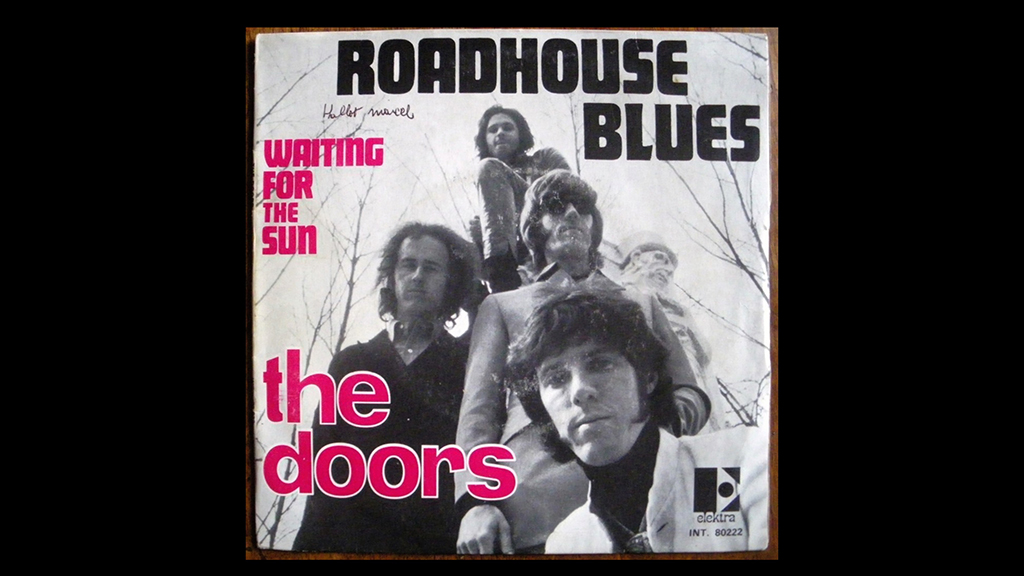
The original recording is in the key of E, so here I’m tackling it on my A harmonica in 2nd position. If we wanted to mimic the guitar riff, it’s very simple:
🎸 Guitar Riff Harmonica Tabs:
-2 -2 -2 -2 -2 -2 4 -4’ -4
-2 -2 -2 -2 -2 -2 -5 6
But in this video, I’m playing what the harmonica is actually playing on the recording like this:
-2 -2 -23 34 -23 (2 times)
-2 -2 -23 34 -23 -2 -2
-23 4 -4 -4’ -3’ -2 (3 times)
-23 4 -4 -4’ -3’ -2 -3’ -3’ -2
-2 -2 -23 34 -23 (3x)
3 -2″ -2 -3′ 4 -4′ -4 -4 -4′ -3′ -2 -3′ -2 -2
#3Sunshine of Your Love
by Cream
From the Summer of Love 1967, the legendary power trio featuring Eric Clapton on guitar plays this song in the key of D.
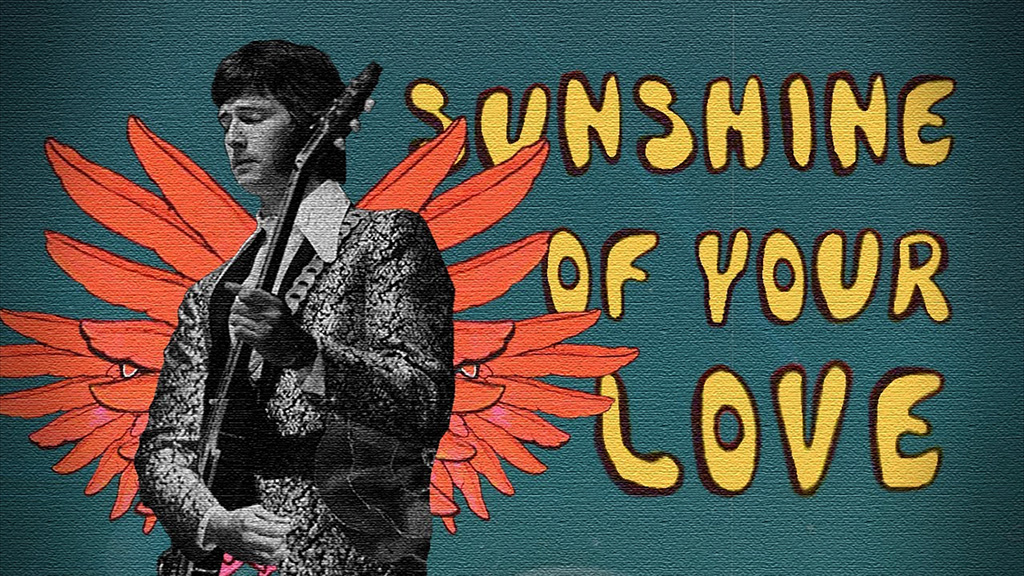
We could play this in 2nd position on a G harmonica, key of D, like this:
6 6 -5 6 -4 -4’ 4 -2 -3′ -2
But because we don’t have the flat 3rd above the octave in 2nd position we can’t do the cool octave displacement that Eric Clapton does in the 2nd half of the riff, unless you have one of these alternate-tuned harps:
Seydel Wilde Rock Tuned Harmonica, key of G harmonica, you would play these tabs:
-6 -6 -5 -6 -4 -4’ 4 -2 -3′ -2
-6 -6 -5 -6 -4 -4’ 4 8 -7′ -6
Parrot-tuned Harmonica(standard tuning the -7 tuned down a half-step) key of G, you would play these tabs:
6 6 -5 6 -4 -4’ 4 -2 -3′ -2
6 6 -5 6 -4 -4’ 4 7 -7 6
But since I don’t have either of those, I decided to play this on my C harmonica in 3rd position, key of D.
For me the most challenging part of playing a riff like this in 3rd position is playing that -3” whole-step bend in tune.
The other great thing about playing this song in 3rd position is that when they go to the IV chord, which is a G chord, we can play along (essentially playing in 2nd position) and it sounds great because there’s no octave displacement in that section of the song.
Here are the harmonica tabs:
(I Chord)
-4 -4 4 -4 -3″ -3”’ 3 -1 -2″ -1
-4 -4 4 -4 -3″ -3”’ 3 6 -5 -4
(IV Chord)
6 6 -5 6 -4 -4’ 4 -2 -3′ -2
6 6 -5 6 -4 -4’ 4 -2 -3′ -2
(I Chord)
-4 -4 4 -4 -3″ -3”’ 3 -1 -2″ -1
-14 -14 14 -14
As in several other songs before this, I’m going to those octaves for a nice strong finish!
#2Are You Gonna Go My Way
by Lenny Kravitz
I had so much fun going back and revisiting Lenny Kravitz’ 1993 hit. What a great song – the energy, arranging, production – really a fantastic song through and through. And, of course, an EPIC guitar riff.🎸
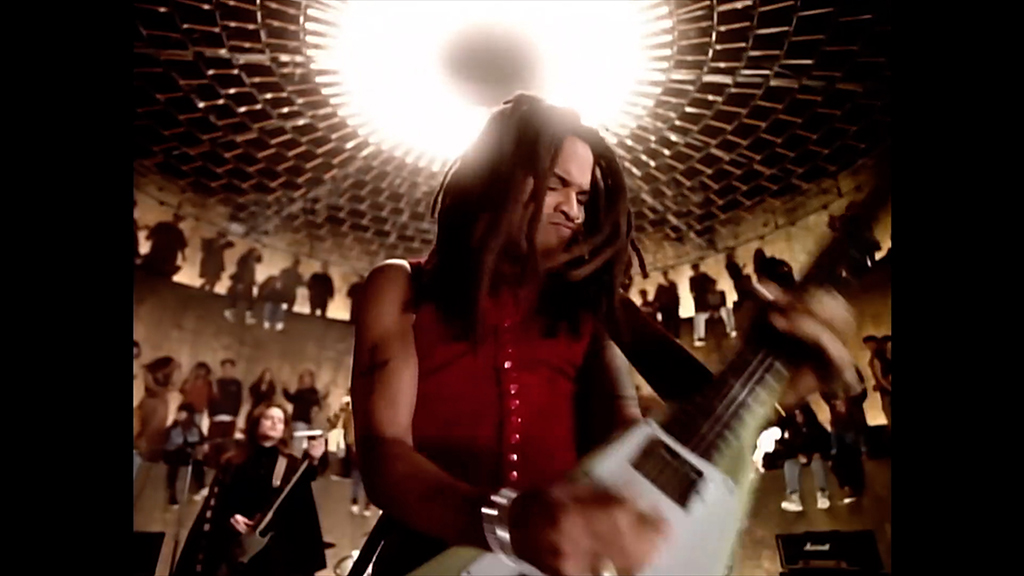
There are 2 guitar parts on the recording. If you wanted to play exactly what I’m playing on the guitar in this vid (the 1st guitar part on the original recording) you could play on a Low D harmonica in 3rd position, key of E. Here are the harmonica tabs:
-6 -6’ -5 -4 -1 4 -4 -1
-6 -6’ -5 -4 -1 4 -4 -56
I find that to be a really fun challenge and the only way I can do those fast octave jumps from -4 to -1 and back up, is utilizing tongue-blocking. Of course bending the -6’ is challenging while tongue blocking, but it CAN BE DONE with practice.
But the part I’m playing in the video (the 2nd guitar part on the original recording) is a very simple riff easily played on an A harmonica in 2nd position, key of E. Here are the harmonica tabs:
-4 -4’ -3’ -2 -1 -2” -2
Just repeat that 4 times, and you’re good to go! 🤘
And, FINALLY…the moment we’ve all been waiting for…
#1Black Dog
by Led Zeppelin
Black Dog was released on Led Zeppelin IV in 1971. I know I’ve said this before, but Led Zeppelin released their first AND second albums in 1969, their THIRD album in 1970, and their FOURTH album in 1971. That’s a WHOLE LOT OF ROCK AND ROLL history to come out in 3 short years!!! 🤯
Black Dog is in the key of A and, just like Sunshine of Your Love, the limitations of range we have in 2nd position render it an unsuitable position for tackling this blazing guitar riff played by the great Jimmy Page.
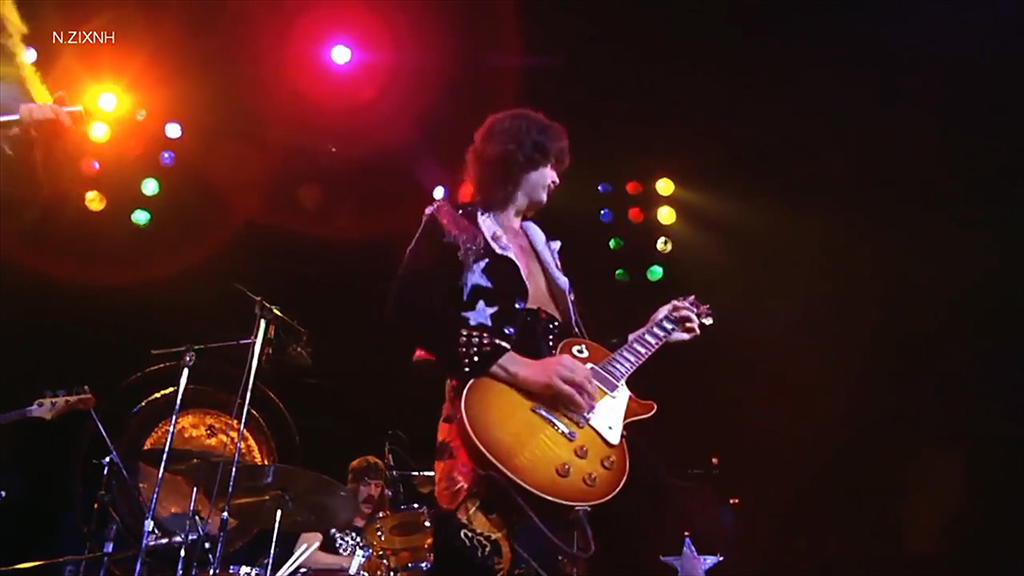
On the other hand, 3rd position on a G harmonica, key of A works GREAT for the riff.
And we can even play the modified version of the riff they do when they go to the V chord (E) – Riff #2 in the tabs below – note that’s essentially playing the G harmonica in 5th position – lots of fast triple -3’’’ to double -3’’ bends makes it VERY challenging to play in tune.
Here are the harmonica tabs:
Riff #1 – (I Chord: A)
-3″ 4 -4′ -4 -3″ -5 -4 6 -6 -5 6 -5 -4 -4 -5 -4
4 -4 -4 3 -3″ -2″ -2 -1 -1
(Repeat one time after each vocal)
Riff #2 – (V Chord: E)
2 3 -3”’-3″ 2 4 -3″ 2 3 -3”’ -3″ 2 4 -3″
2 3 -3”’-3″ 2 4 -3″ 2 3 -3”’ -3″ 3
(Straight into Riff #1 without stopping)
Riff #1 – (I Chord: A)
-3″ 4 -4′ -4 -3″ -5 -4 6 -6 -5 6 -5 -4 -4 -5 -4
4 -4 -4 3 -3″ -2″ -2 -1
Vocal Melody:
-14 -3′ -3 -14 -3′ -3 -6′ -6 6 -5 -4
I hope you’ve enjoyed checking out the top 10 guitar riffs on harmonica as much as I have. One takeaway for me is that while:
The blusier stuff sounds great in 2nd position 😎
(Boom Boom, Hoochie Coochie Man, Roadhouse Blues)
The hardest rocking stuff tends to work best in 3rd position 👨🎤
(Satisfaction, Smoke on the Water, Sunshine of Your Love, Black Dog)
And that’s it from the world of harmonica. Keep on playing the harmonica, and making the world a more rocking place! 🌍🤘🎶

Comments
Got something to say? Post a comment below.